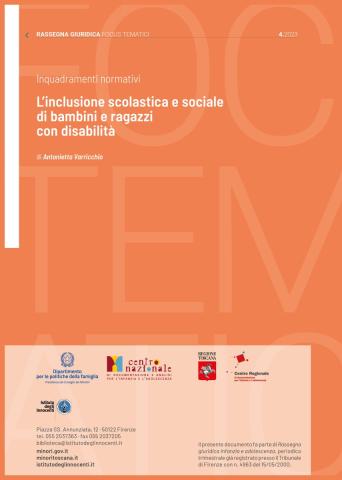
School and social inclusion of children and young people with disabilities
The right to education and the principle of equality are the pillars that guide the whole structure around which the legal framework of school inclusion of children, boys and girls with disabilities is constructed.
The first achievement on the issue of ensuring the right to inclusion came with a series of laws that made it possible to accommodate students with severe disabilities or slight learning and socialisation difficulties, such as Article 12 of Law No 1859 of 31 December 1962, Istituzione e ordinamento della scuola media statale [Establishment and organization of State secondary schools], which provided for the possibility of establishing special classes, special calendars and special programs.
Today, what has changed is the perspective with which students with special needs are placed within the schooling and learning system, in fact, the Final Report of the Falcucci Commission on the school problems of disabled students emphasizes that individuals with developmental, learning and adaptation difficulties must be considered protagonists of their own growth.
Removing the obstacles and barriers still existing today and preventing the full inclusion of children, boys and girls with disabilities is crucial for their healthy psychophysical development, because the mere presence of a disability cannot be a legitimate reason for not guaranteeing a right.
Attached is a legislative overview on the topic of school and social inclusion of children and young people with disabilities
| Attachment | Size |
|---|---|
| 847.19 KB |

